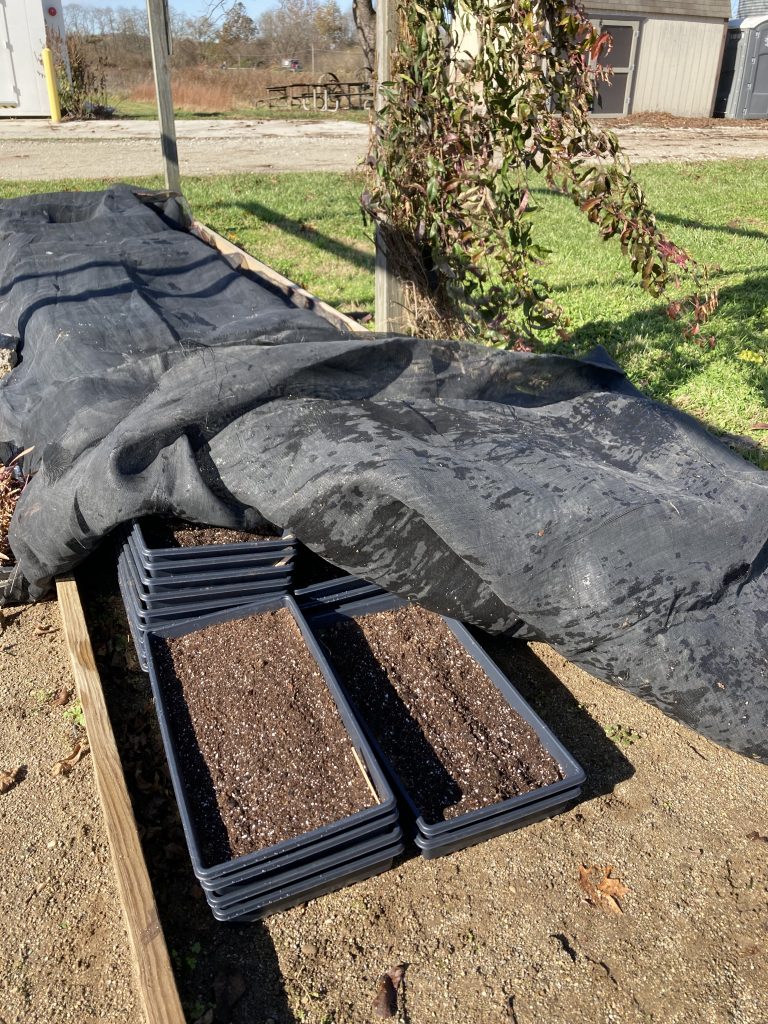Saving Native Seeds: Preserving Biodiversity & Local Ecotypes
Greetings from the Shaker Trace Native Seed Nursery! We are thankful for our fantastic volunteers for harvesting seed and helping put our production beds to sleep at the end of the season. After an abundant year, we have plenty of seed in our drying barn this November.


Seeds of more than 200 species of native plants are collected and processed for restoration projects throughout the park district (above, left). Stratification of seed for next year’s plants begins once temperatures are cold enough (above, right). (Photos: Lauren Frederick)
We depend on diverse populations of seed sourced from a local ecotype for our restoration work. Plants growing in our ecotype are adapted to local environmental conditions. If you’re used to getting your seeds from a local garden store or seed swap, this might be new territory for you. Across the world, plants adapt to the very specific conditions of their ecosystem. Our lands are divided into ecological zones or ecoregions where the native plants and animals share a certain amount of similarities, while remaining distinct from nearby ecoregions.
If seeds or plants are sourced from outside the local ecoregion, they may struggle. A plant grown from seed sourced from a cold hardy purple coneflower found 400 miles north of us on the Canadian border might wilt sooner in our long and dry summers. Conversely, if seed from our native eastern prickly pear cactus is gathered from the Gulf Coast, its cells might freeze and burst during our cold winters. These are extreme but helpful examples.
A close partner to ecotype is biodiversity. Biodiversity is the variety of life on our planet in all its forms and interactions. This buzzword is a darling in discussions about healthy ecosystems for good reason. When you buy a Baptisia plant from the garden center, it is a cultivar that has been bred for consistent and ideal horticultural characteristics. When harvesting seed to maintain biodiversity, it is ideally gathered from plants of varying physical characteristics, around the edges and in the center of populations, and across years to capture as much diversity as possible. We focus on native biodiversity to support sustainable ecosystems at Shaker Trace Nursery. This diversity can increase survival rates of a species if a new invasive pest emerges or a catastrophic weather event occurs.
Much of the seed available in ecoregions across the country are from remnant prairies, and there is still much that is unknown. Will these fragment ecosystems provide enough biodiversity? Are the remaining specimens strong enough to carry the species after a hundred years of agriculture? What will happen as our summers become warmer and our winters unpredictable? These are questions conservation organizations across the world are working on, including right here at Great Parks.

Do you want to introduce native plants of the local ecotype into your backyard habitat? Shaker Trace Nursery hosts a native plant sale every summer, as do many other regional organizations. Our plants are grown from seed harvested by hand in Hamilton County. This labor-intensive process would not be possible without the support of our dedicated volunteers and staff.
Interested in learning more or helping out at the nursery as a volunteer? Sign up to become a volunteer and get involved!
—
Lauren Frederick
Conservation & Parks Technician, Shaker Trace Nursery, Miami Whitewater Forest

